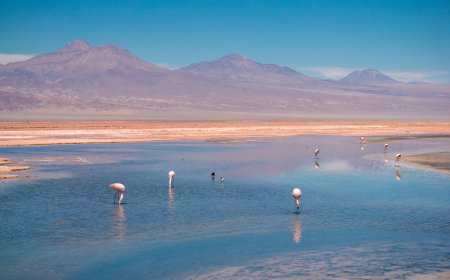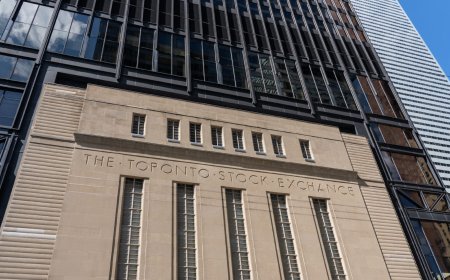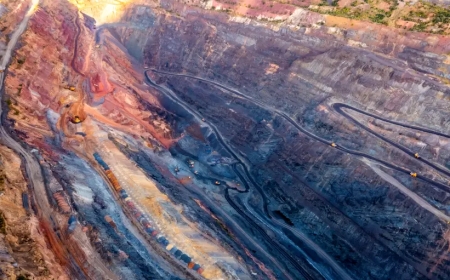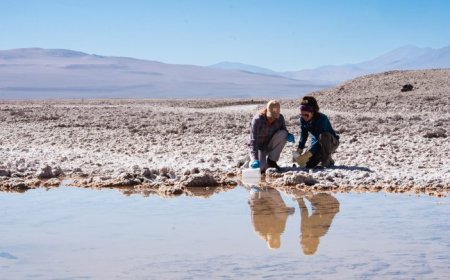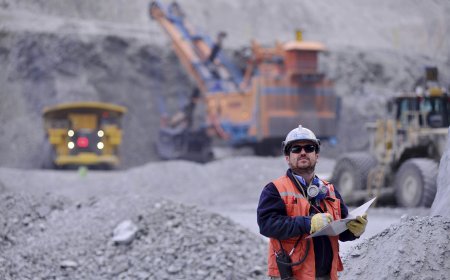Canada’s Top Ten: Barrick leads this year’s list of miners by market cap
Barrick Gold (TSX: ABX; NYSE: GOLD) returned as Canada’s largest mining company on the Toronto Stock Exchange, displacing last year’s leader Nutrien (TSX: NTR), which plummeted in market value by nearly half.


Barrick, with a market capitalization of $40.3 billion, traded places with second-position Nutrien, which dropped 46% to $36.8 billion from $67.8 billion, according to data collected as of June 1 by Mining Intelligence, part of The Northern Miner Group.
Barrick and Nutrien, the world’s largest potash-producer, also ran one-two in 2021 and 2020. Kinross Gold (TSX: K, NYSE: KGC) rose to eighth from ninth last year, Pan American Silver (TSX: PAAS; NASDAQ: PAAS) re-entered the list at ninth and Lundin Mining (TSX: LUN) slid to 10th from eighth.
There was no other movement in the top 10. Positions three to seven held steady from last year with Agnico Eagle Mines (TSX: AEM; NYSE: AEM), Teck Resources (TSX: TECK.A, TECK.B; NYSE: TECK), First Quantum Minerals (TSX: FM), Cameco (TSX: CCO; NYSE: CCJ) and Ivanhoe Mines (TSX: IVN; US-OTC: IVPAF).
Barrick regained the top spot even as it stayed on the sidelines of gold sector mergers and acquisitions such as the division of Yamana, and Newmont (TSX: NGT; NYSE: NEM) swallowing Newcrest Mining (TSX: NCM; ASX: NCM) years after spawning it. Barrick CEO Mark Bristow said he’s on the hunt for new mines, not deals. However, the company did make an informal offer to First Quantum that was rejected, according to Bloomberg News last month.
Barrick has been focusing on the US$7-billion Reko Diq copper-gold project in Pakistan. Court approval arrived in December after the project was on hold for more than a decade. An updated feasibility study is due next year, Bristow said.
The plan so far is for Reko Diq to be developed for US$4 billion to mine 40 million tonnes of ore annually from an open pit during the first five years, then double production in a US$3 billion second phase. Barrick owns half of the project and a quarter is held by local federally-owned companies. Balochistan province holds 15% of it fully funded and 10% on a free-carried basis.
Sales hurt Nutrien
Saskatoon, Sask.-based Nutrien forecast in May its adjusted earnings before interest, taxes, depreciation and amortization will fall this year to a range of US$6.5 billion to US$8 billion from US$12.2 billion in 2022. That’s down from earlier guidance of reaching $8.4 billion to $10 billion this year. Net profit for the quarter to March 31 fell by more than half from a year earlier to US$576 million from $1.4 billion.
Potash demand strengthened in North America during spring planting, while offshore markets have been more variable, the company said. Last year, the war in Ukraine slashed potash exports from that country, Russia and Belarus, though inflation-hit farmers in North America and Brazil limited purchases. Nutrien said this year it would push a planned annual output increase to 18 million tonnes to 2026 from 2025.
When Pan American Silver and Agnico Eagle paid US$4.8 billion for Yamana in a deal that closed this year, Agnico Eagle took the Canadian assets. These included the part of the Canadian Malartic gold mine it didn’t already own, the nearby Odyssey and Wasamac projects and several exploration properties in Ontario and Manitoba. Agnico is third on the Canadian market value list and third in the world by gold output.
Teck, Canada’s largest diversified miner, continues as fourth on the list at $27.3 billion. The company is assessing takeover bids from Glencore (LSE: GLEN) for the whole company, and in June for just its coal assets. Teck had wanted to separate its metals business from its coal unit, but the concept was rejected by shareholders. This latest offer could make it a reality and likely lead Glencore to do the same thing.
Teck said it’s reviewing several proposals for its coal business. Prices for thermal and steel-making coal surged last year because of the war in Ukraine and other supply chain constraints. Coal remains a lucrative but polluting business as governments, activists and companies with more progressive policies, such as Teck, seek to ease away from fossil fuels.
First Quantum loses value
First Quantum Minerals treaded water at fifth on the list although it lost 22% of its value to $19.7 billion from $25.1 billion last year. In Panama this year, tough negotiations with the government nearly repeated how the company lost the Kolwezi copper project licence in the Democratic Republic of Congo (DRC) in 2009. Production at the Cobre Panama copper mine was halted in February in a dispute with authorities over tax and royalty payments for a new contract. First Quantum reached a new deal with Panama in March.
Cameco, buoyed by the transition away from fossil fuels, efforts at Western independence from Russian energy and new uranium fuel contracts with Ukraine and Bulgaria, held down sixth spot for a second year. It increased in value to $16.4 billion from $12.8 billion.
CEO Tim Gitzel revelled in how the United States, Canada, France, Japan and the United Kingdom elevated nuclear energy collaboration at meetings in March and April. Cameco’s first-quarter revenue rose 73% compared with a year earlier to $687 million.
Ivanhoe Mines, in seventh place with a value of $12.1 billion, is coming off record net profit last year of US$434 million, a near tenfold increase over the previous year. It’s expanding output at the Kamoa-Kakula copper joint venture with China’s Zijin Mining in the DRC as it invests in cutting edge energy wave technology to transform exploration and processing.
Ivanhoe is developing the Platreef project in South Africa for first production in 2024. It has 125.2 million probable tonnes grading 1.94 grams platinum per tonne, according to a feasibility study last year.
Kinross rises

Kinross Gold improved one spot to eighth and a value of $7.8 billion. It reported first-quarter revenue jumped a third to US$929.3 million from US$700.9 million a year earlier. Production rose 23% during the same period, primarily because of output ramping up at La Coipa in Peru. The Paracatu mine in Brazil increased production and cut costs while output at Tasiast in Mauritania remained strong. It’s continuing to drill its Great Bear project in Ontario.
Pan American Silver’s acquisition of Yamana Gold’s mines in Latin America propelled it back into this year’s list at number nine. It last made the top 10 in 2020 when it was sixth. The company, founded by Canadian Mining Hall of Fame member Ross Beaty, increased its market value to $7.5 billion. Its value was $6.1 billion last year in 12th spot.
“Pan American will be a significantly larger, more diversified company following our acquisition of Yamana,” CEO Michael Steinmann said in May.
Lundin Mining rounded out the list with a drop to $7.3 billion from $8.2 billion. In March, the Toronto-based miner bought 51% of the Caserones copper-molybdenum mine in Chile for US$950 million. The operation suffered delays and cost overruns after it began production in 2014, only hitting two-thirds of planned annual output of 150,000 tonnes. Lundin is in hot water with authorities in Chile after a sinkhole 36 metres across appeared last year close to the Alcaparrosa mine.


